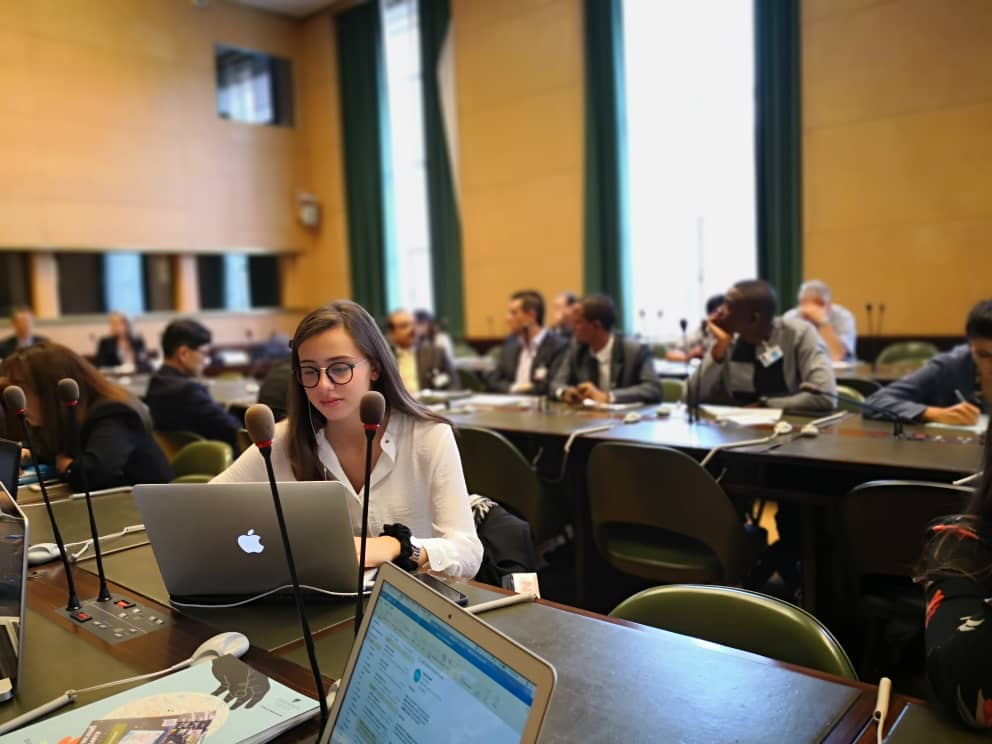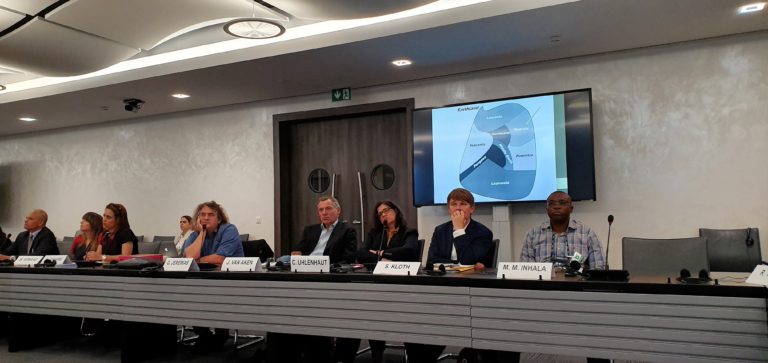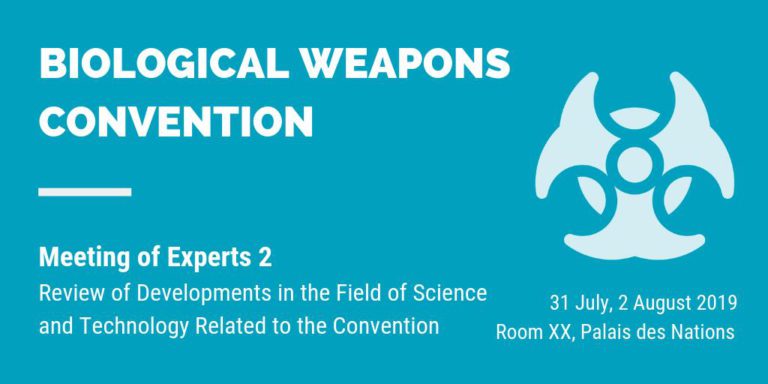Preparing the 4th CWC Review Conference: Civil Society – 1
Possible Priorities for the Fourth CWC Review Conference and for the OPCW in the Next Five Years Statement by Dr John Hart (Stockholm International Peace Research Institute – SIPRI)* Presented at: Open-Ended Working Group for the Preparation of the Fourth Review Conference (OEWG-RC), Organisation for the Prohibition of Chemical Weapons (OPCW), The Hague, Netherlands, 16 April 2018 I would like to thank the OPCW and the Open-Ended Working Group for the Preparation of the Fourth Review Conference (OEWG-RC) for the opportunity to participate in today’s meeting. I would also like to thank all others who have been involved in …
Novichok and the Chemical Weapons Convention
Assassinations with nerve agents are rare. Very rare. The reason is simple: other means to eliminate a person are simpler and much more effective. The marginal benefit from using even some of the most toxic substances ever made by man is negligible. What is more, the attempt fails often, as Aum Shinrikyo experienced when trying to take out some of the cult’s enemies with VX before the 1995 sarin attack in the Tokyo underground. Last year’s murder of Kim Jong-nam, half-brother of North-Korean leader Kim Jong-un, also involved VX according to Malaysian authorities. However, the real perpetrator behind the two …
Geopolitical manoeuvring behind Skripal
On 4 April the Executive Council (EC) of the Organisation for the Prohibition of Chemical Weapons (OPCW) will meet in a special session. Russia called the extraordinary meeting. It has been a month now since former Russian spy Sergei Skripal and his daughter Yulia had been exposed to a nerve agent in Salisbury. The United Kingdom (UK) government identified it as a member of the ‘Novichok’ family, once researched and developed by the Soviet Union. Russia is believed to have continued the programme at least during the first years after the breakup of the USSR. It has never come clear …
Disarmament education: Road-testing a master’s course on CBRN dual-use technology transfer controls
From 17 until 28 June I ran an Executive Course on Export Control at the M. Narikbayev KAZGUU University in Nur-Sultan (formerly Astana), Kazakhstan. Its goal was twofold. First, it tested in a real university setting parts of a master’s course on chemical, biological, radiological and nuclear (CBRN) dual-use technology transfer controls I have been developing since February 2018. Its second purpose was to attract interest in organising the full master’s course from other Central Asian academic institutes. Set in the broader context of peace and disarmament education, the Executive Course posed considerable challenges from the perspective of educational methodology …
Blog 1 – Experiences of a student at the Meetings of Experts of the Biological and Toxin Weapons Convention
I am Chiara Barbeschi and study Security Studies (BSc) at Leiden University in the Netherlands. Interning at The Trench and representing the non-governmental organisation (NGO) as a Research Associate at the five Meetings of Experts (MXs) of the Biological and Toxin Weapons Convention (BTWC) is an incredible opportunity that Jean Pascal Zanders granted me. Blogging about it is a chance of sharing my perspective, impressions and account of the conference. I know that there are also the daily factual reports Richard Guthrie writes and distributes in the meeting room. My posts convey the thoughts of a student experiencing the BTWC meetings for the first time. MX1 (29 – …
Third tabletop exercise on emergency assistance in case of biological weapon use – First impressions
The day after the presentation of the report on the Article VII tabletop exercise (TTX) held in Lomé, Togo on 29 and 30 May to the states parties of the Biological and Toxin Weapons Convention (BTWC), the Fondation pour la recherche stratégique (FRS) and the BTWC Implementation Support Unit (ISU) ran another TTX in the United Nations building in Geneva. This time the focus was on a series of anthrax outbreaks that affected mostly herd animals, but also led to multiple human casualties. The scenario was a deliberate attempt to break with the habitual simulations of increasingly dire human pandemics. After all, the BTWC covers …
Blog 2 – Experiences of a student at the Meetings of Experts of the Biological and Toxin Weapons Convention
This second blog post covers both the second and third Meetings of Experts (MXs) of the Biological and Toxin Weapons Convention (BTWC). MX2 on science and technology took place on 31 July and 2 August (the day in between being the Swiss national day); MX3 on strengthening national implementation of the BTWC was a one-day event on 5 August. MX2 impressions Like at the start of the week I was still sitting behind The Trench nameplate, which was formally represented for the first time in these five MXs of 2019. MX2 was chaired by Mr Yury Nikolaichik of Belarus who decided to …
Deciding on emergency assistance in case of biological weapons use
Today, in the Palais des Nations in Geneva we presented the report on the Tabletop Exercise (TTX) on the Implementation of Article VII of the Biological and Toxin Weapons Convention (BTWC), which the Fondation pour la recherche stratégique (FRS) and the BTWC Implementation Support Unit (ISU) organised in cooperation with UN Regional Centre for Peace and Disarmament (UNREC) organised in Lomé, Togo on 28–29 May 2019. Being one of the more obscure provisions in the BTWC, Article VII only attracted state party attention over the past ten years or so. In follow-up to the decision of the 7th Review Conference (2011), parties to the convention looked for the …
How the Convergence of Science, Industry and Military Art Slaughtered Innocence
Keynote speech at the CONDENsE Conference, Ypres, Belgium, 29 August 2019 Good evening ladies and gentlemen, colleagues and friends, It is a real pleasure to be back in Ieper, Ypres, Ypern or as British Tommies in the trenches used to say over a century ago, Wipers. As the Last Post ceremony at the Menin Gate reminded us yesterday evening, this city suffered heavily during the First World War.Raised to the ground during four years of combat, including three major battles – the first one in the autumn of 1914, which halted the German advance along this stretch of the frontline …
Nuclear outrage
In its situation report of 11 March 2015, the World Health Organization (WHO) tallies a death toll of 9,961 out of 24,247 cases (41% mortality rate) in the three West-African countries of Guinea, Liberia and Sierra Leone. While the overall rate of new infections seems to be slowing down, the numbers nevertheless continue to rise. Infectious disease is the greatest threat to mankind, far higher than any imaginable terrorist plot. According to WHO statistics from about 10 years ago, infectious diseases are responsible for over 13 million deaths worldwide each year. That is 25% of all deaths worldwide each year. …






